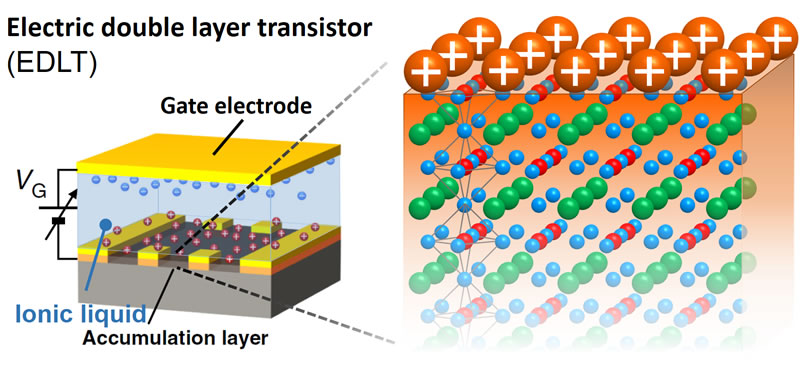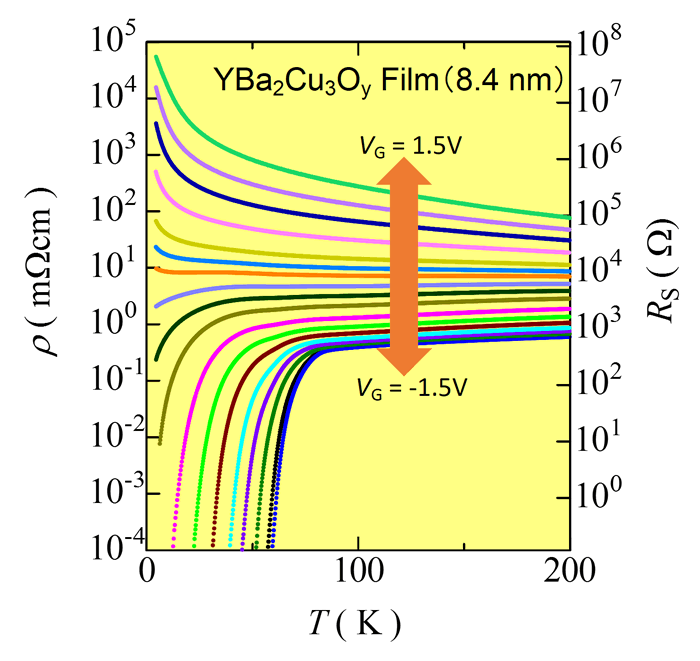Condensed Matter Experiment Ⅰ
Low Temperature Materials Science
http://ltsd.imr.tohoku.ac.jp/index-e.html
Staff
| Associate Professor : | Tsutomu Nojima | |||
| Assistant Professor : | Shintaro Nakamura |
Research



Our group studies the quantum phenomena occurring at low temperatures in various superconductors and highly-correlated electron systems. In addition to understanding the fundamental properties of these materials, we focus on controlling them in the form of thin films and devices, which leads to finding novel physical phenomena. The current research subjects are the electric-field-induced superconductivity, two dimensional superconductivity with atomic-layer thickness, exotic superconductivity in magnetic fields, as described below
1) Electric field induced superconductivity:
By using electric double layer transistor (EDLT) configurations, we induce the conduction carries electrostatically in the thin films or on the surfaces of insulators and explore the novel superconducting phenomena and mechanisms by tuning the carriers. Especially, we are interested in the superconductivity with broken inversion symmetry and the ambipolar doping effect.
2) Two dimentional superconductivity:
In superconductor thin films of several nm to several tens of nm, the novel phenomena, which are not observed or less pronounced in bulk superconductors, would appear due to the decrease in dimensionality. By using two dimensional thin films of various superconductors, we are conducting research aiming at rise of critial temperature or critical magnetic field and creation of new superconducting phenomena.
3) Vortex matter physics:
Recently emerging high-Tc superconductors such as cupratesand iron pnictides (chalcogenides) show peculiar features in their mixed states (vortex states) due to the strong thermal fluctuation and/or multi-band effect. We are studying them by using magnetization, magnetic torque and transport measurements.

